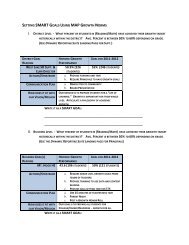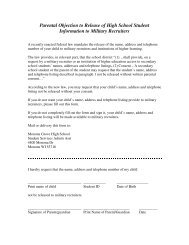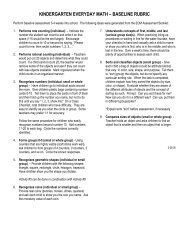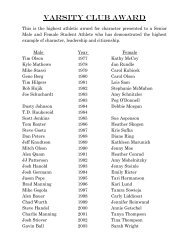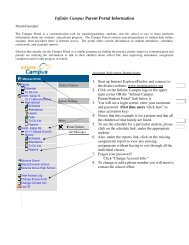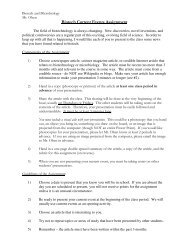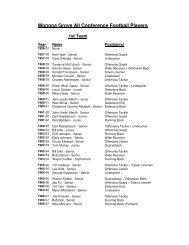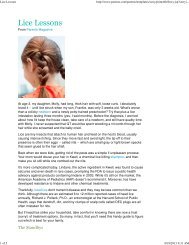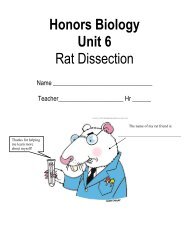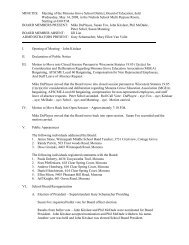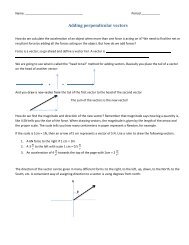Packet for Cu lab, naming and writing formulas, reaction types and ...
Packet for Cu lab, naming and writing formulas, reaction types and ...
Packet for Cu lab, naming and writing formulas, reaction types and ...
You also want an ePaper? Increase the reach of your titles
YUMPU automatically turns print PDFs into web optimized ePapers that Google loves.
Product prediction<br />
How can classifying <strong>reaction</strong>s help you predict products? We need to look at a few more details be<strong>for</strong>e doing that, since some<br />
<strong>types</strong> of <strong>reaction</strong> are subdivided into sub<strong>types</strong>.<br />
I. Composition or combination <strong>reaction</strong>s<br />
A + B<br />
AB<br />
Element + element<br />
Compound<br />
Prediction: Write the same elements in the reactants as the products <strong>and</strong> do the criss-cross.<br />
Example:<br />
Fe + O2 Fe2O3<br />
(The product above is rust, by the way!)<br />
II.<br />
Decomposition<br />
AB<br />
compound<br />
compound<br />
compound<br />
A + B<br />
element + element<br />
element + compound<br />
compound + compound<br />
Sub<strong>types</strong> of decomposition <strong>reaction</strong>s<br />
You need to memorize the products that each of the following decomposition <strong>reaction</strong>s produce so you can predict<br />
what a given decomposition <strong>reaction</strong> will produce<br />
A. Electrolysis of binary compound<br />
A binary compound is a compound made up of exactly two elements.<br />
Examples: NaCl, MgO, H2O<br />
Compound<br />
element + element<br />
A compound is split into individual elements. Electrolysis is used in many industrial processes in order to<br />
produce individual elements that are normally found as compounds in nature. For example, electrolysis is used to produce Al<br />
by separating it from its ore, Al(OH)3.<br />
Prediction: simply write each individual element as a product. Do not <strong>for</strong>get to put a subscript 2 on the diatomic<br />
elements! N2, O2, F2, Cl2, Br2, I2, H2<br />
AB<br />
A + B<br />
Examples:<br />
NaCl<br />
H2O<br />
Na + Cl<br />
H2 + O2



